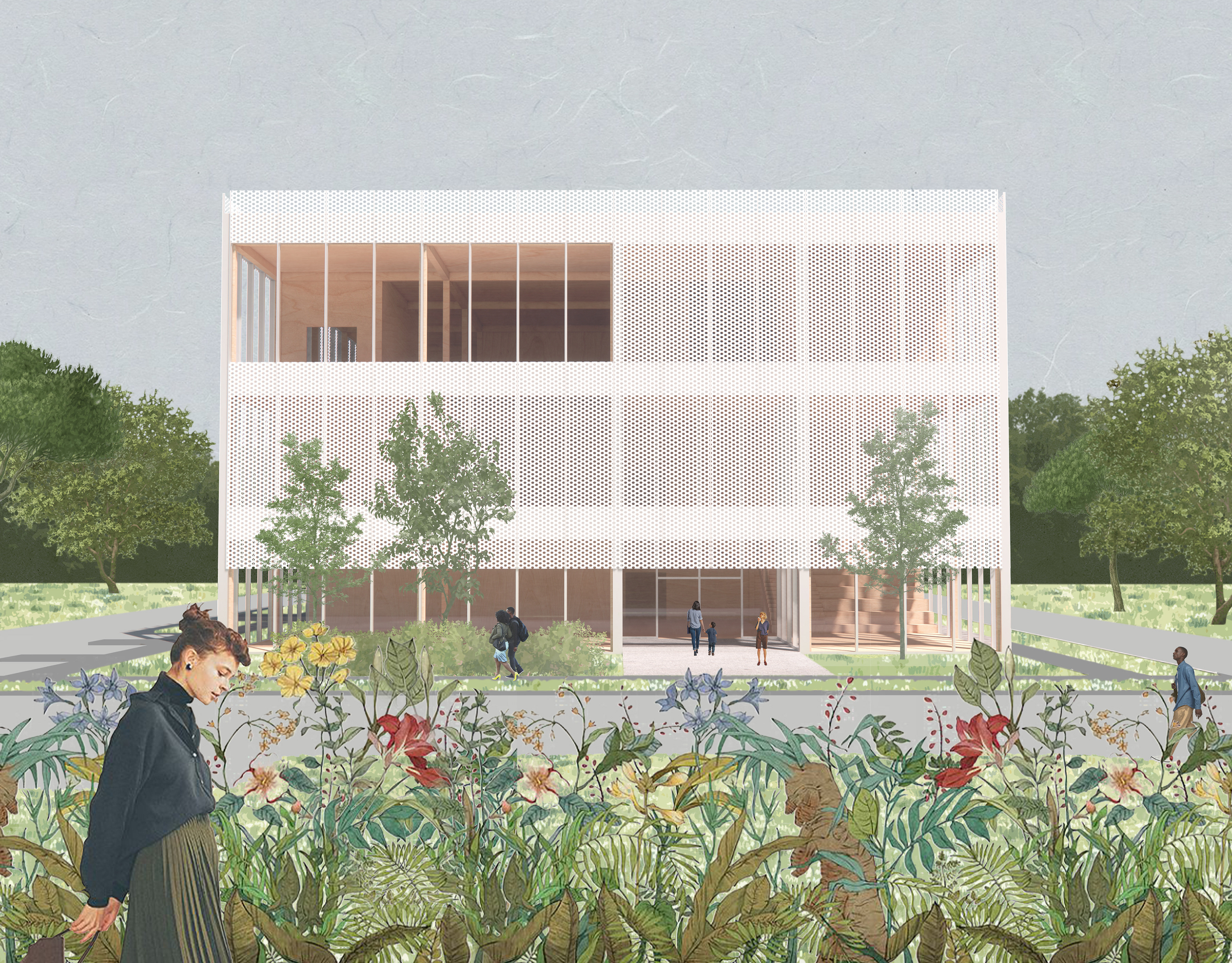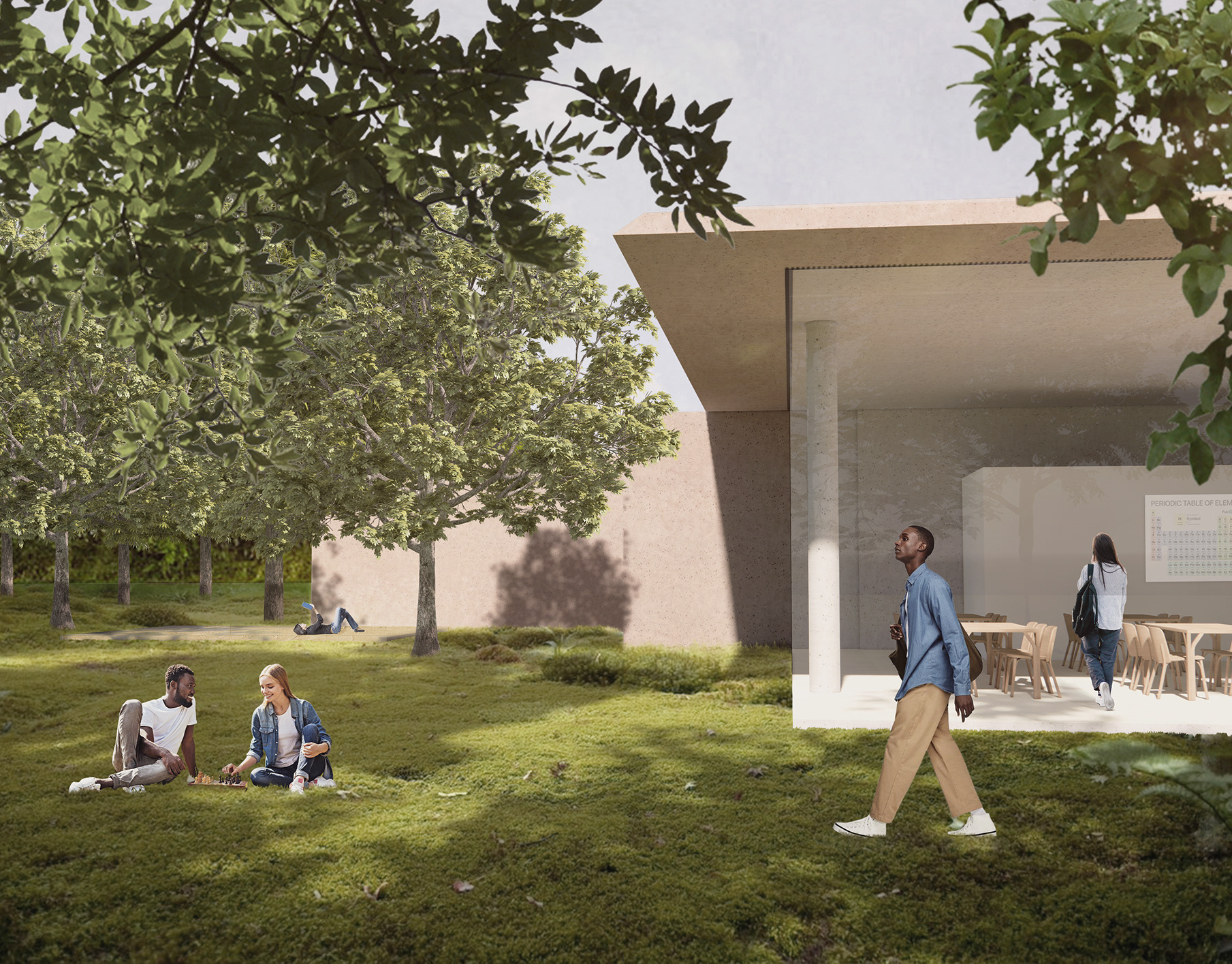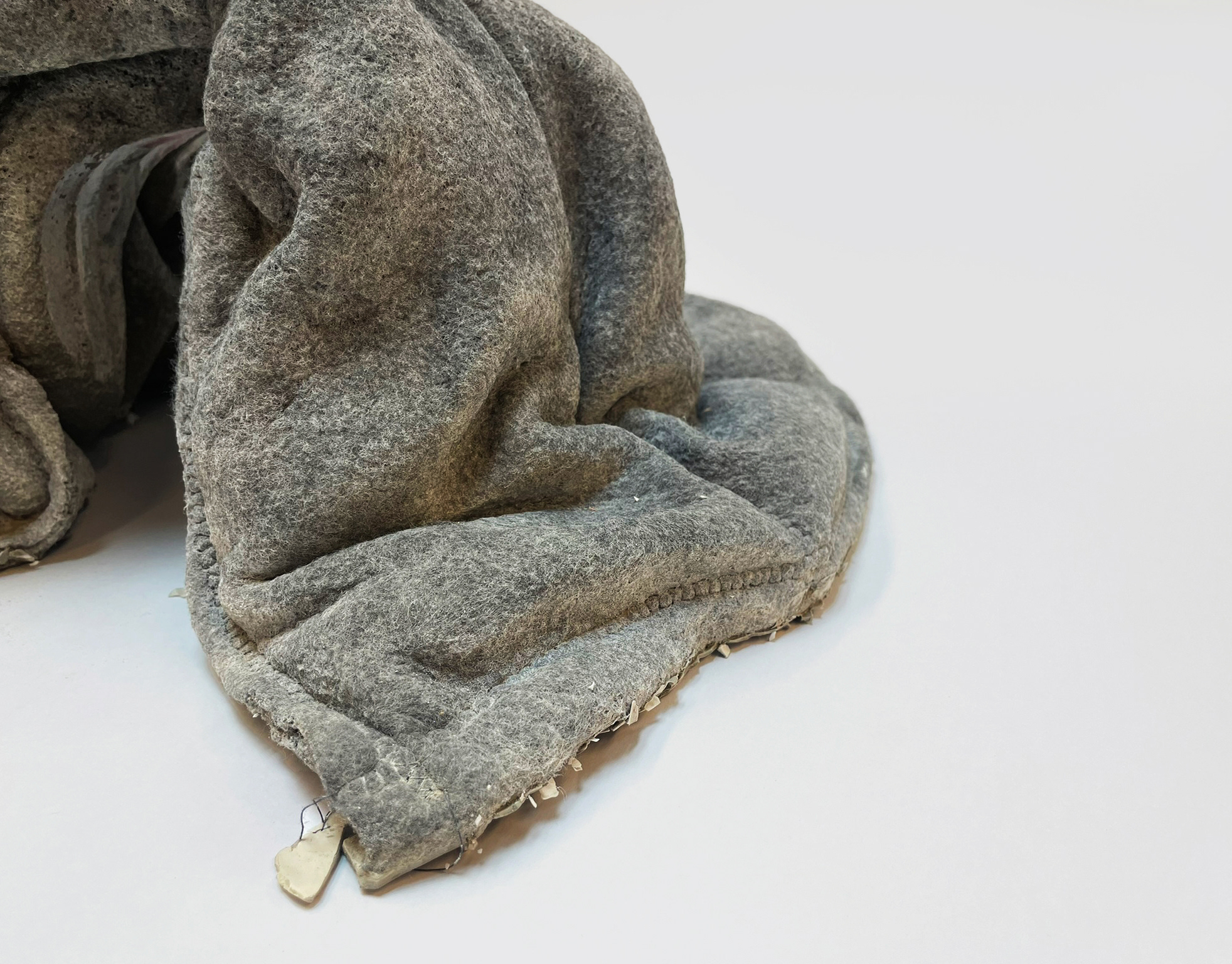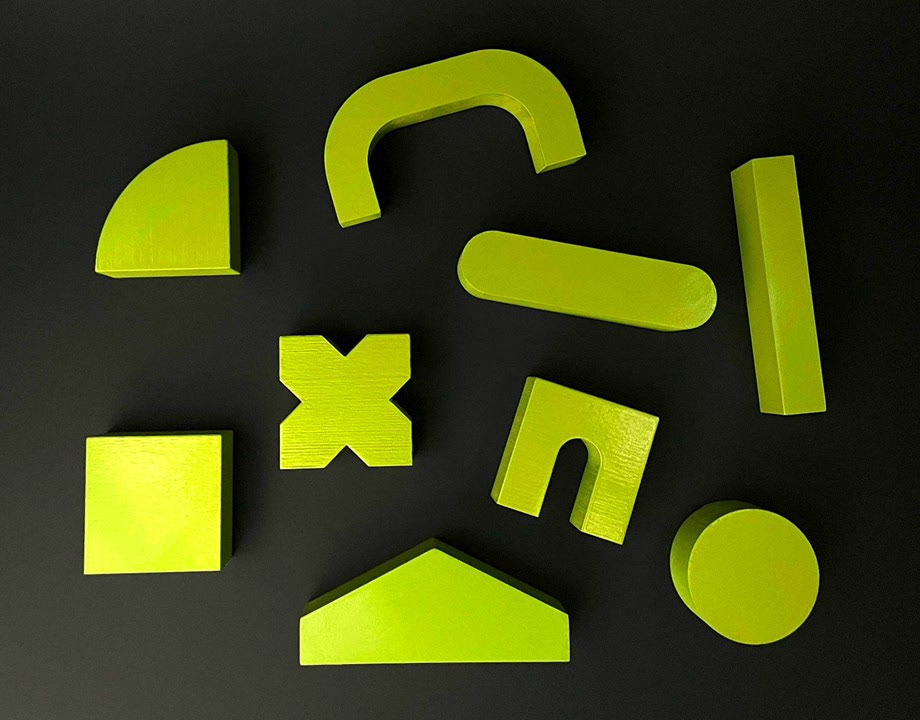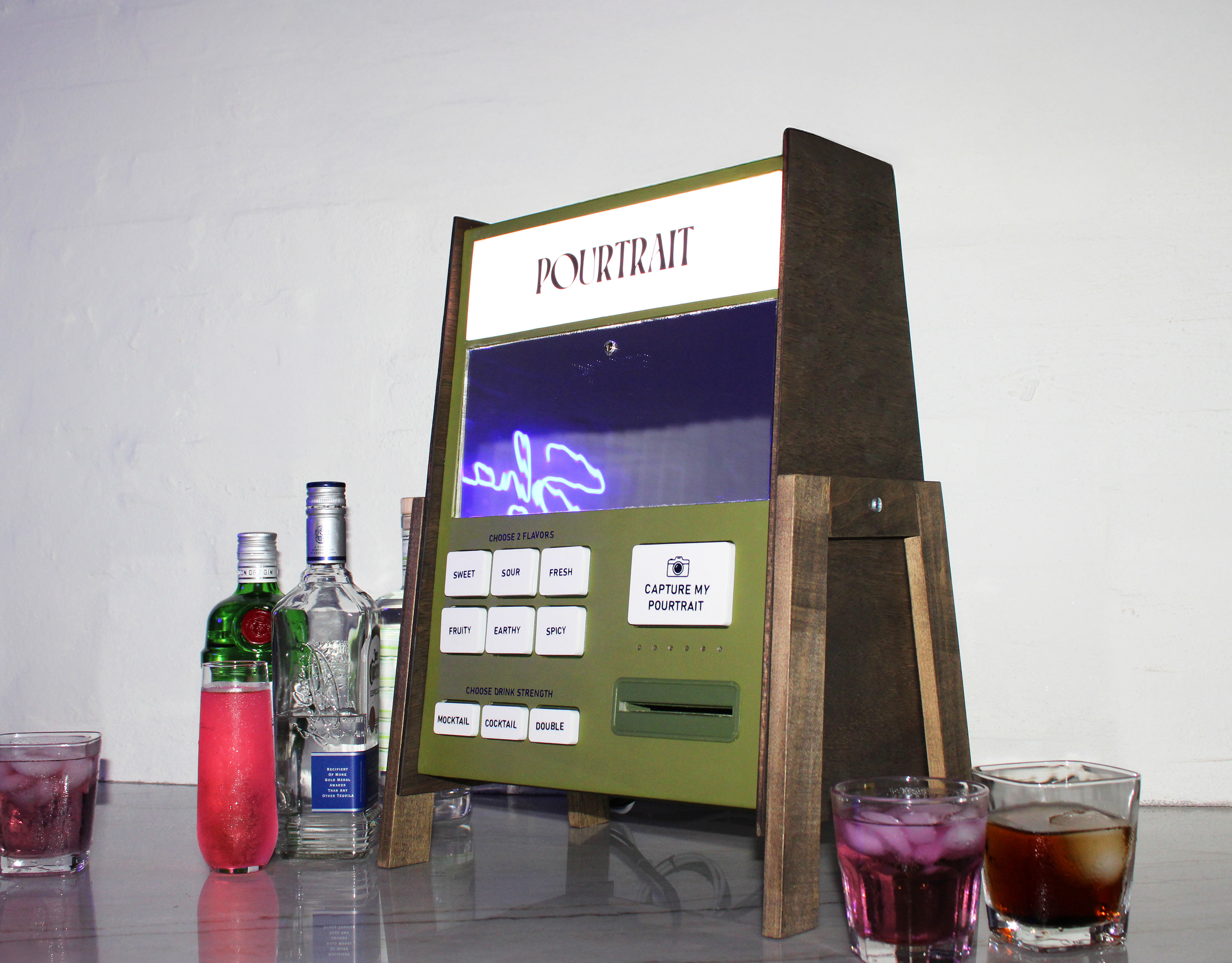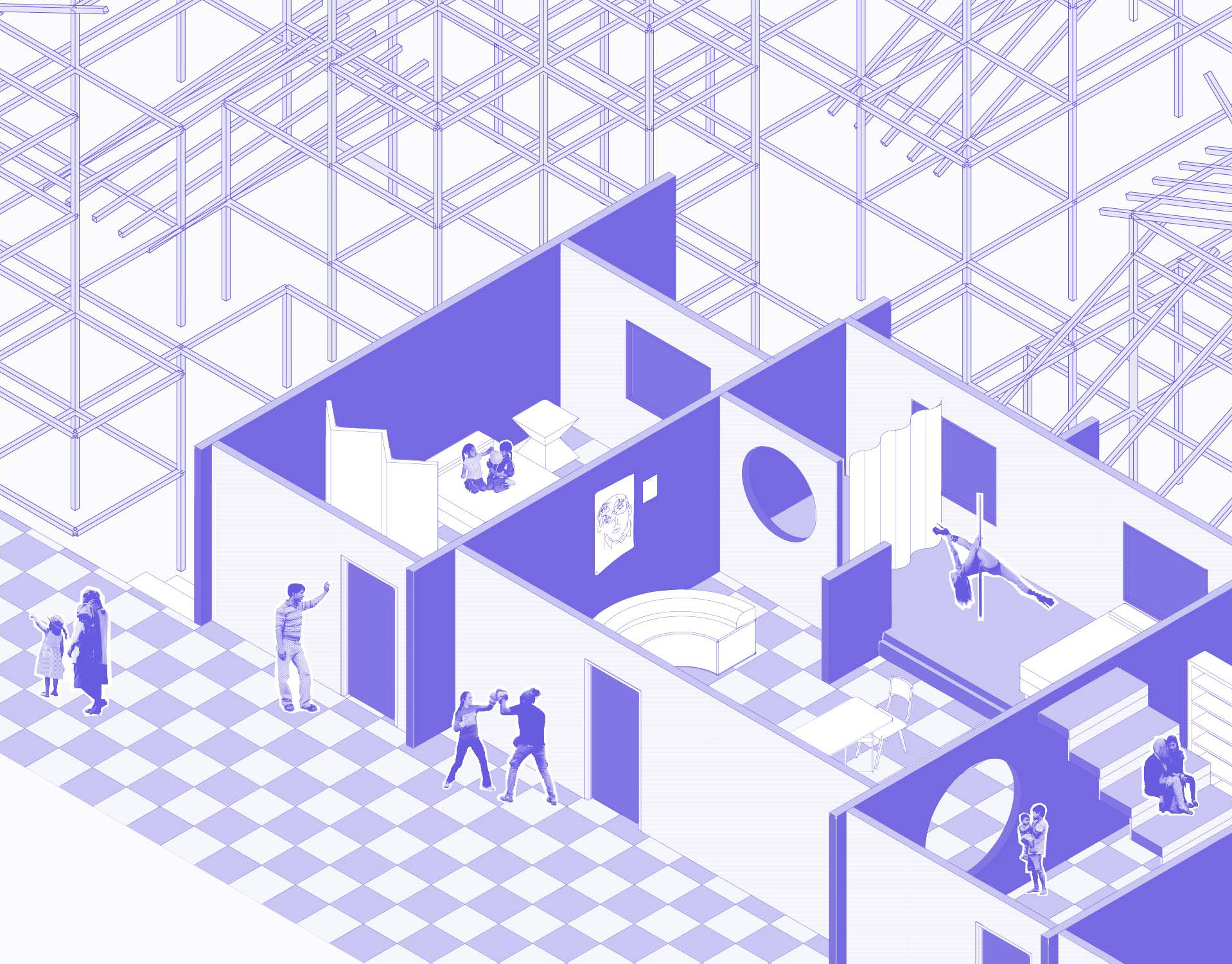YEAR: 2020
LOCATION: AUSTIN, TX
AIA Austin Force Majeure Competition
East Austin is in need of infrastructure to support those in economic and health disparity, especially during a crisis. To better serve the community, this project proposes an urban park focusing on allotment, cultivation, decentralization, and education.
First, three temporary pavilions made of mycelium bricks act as placeholders for future development. Each allotted space anticipates services such as reformative housing, job training facilities, and affordable childcare. Architecture alone cannot solve complex socioeconomic issues; public involvement is necessary to change policies and demand action. As the mycelium bricks decay over the course of 5-10 years, the community will see the pavilions as a reminder of the need for growth.
Second, this project encourages a circular economy. The large-scale community garden and mushroom fruiting chamber take in waste and compostable materials from nearby businesses to aid in food production. A weekly farmers market will be established to provide fresh produce and create employment opportunities.
Third, the program is decentralized, forming a varied network of circulation. In addition to increasing activity and exploration, this method promotes social distancing in a pandemic environment.
Last, the proposed system of cultivation will be used to teach about public health, healthy living habits, and sustainable modes of operation. In addition, educational volunteer opportunities will be made available to Oak Springs Elementary.
Not only are mushrooms used as an architectural component and as a tool for cultivation and education, but also as a symbol of the park, and by extension, the Govalle neighborhood in East Austin. Mushrooms symbolize rapid growth, which is what this urban realm will facilitate in the coming years.
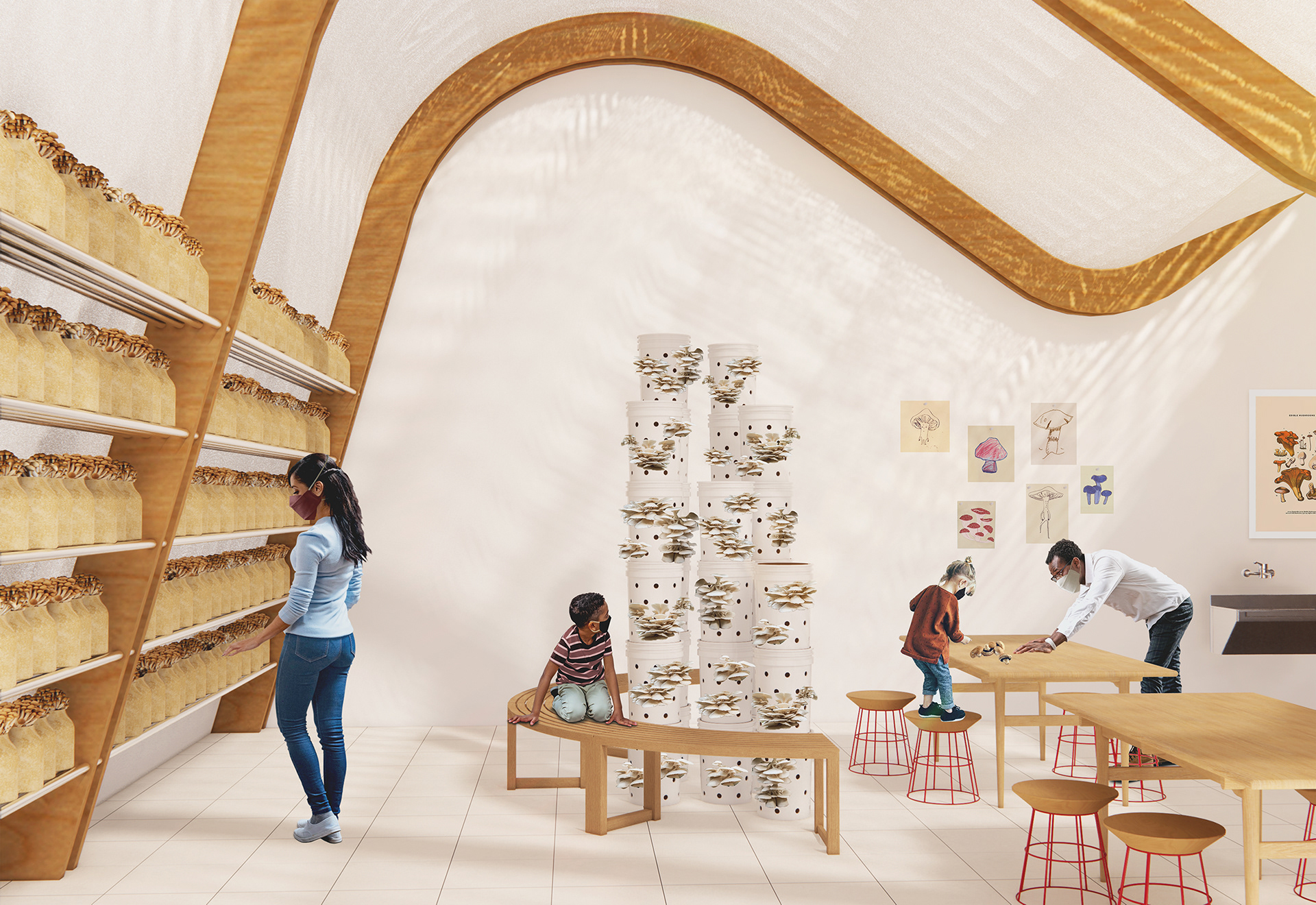
The fruiting chamber in Building II is an educational space that emphasizes urban farming and compost recycling. Receiving biodegradable materials from an on-site café and neighboring commercial mall, the fruiting chamber is both processing area and classroom for East Austin residents to learn about sustainability and cultivation.
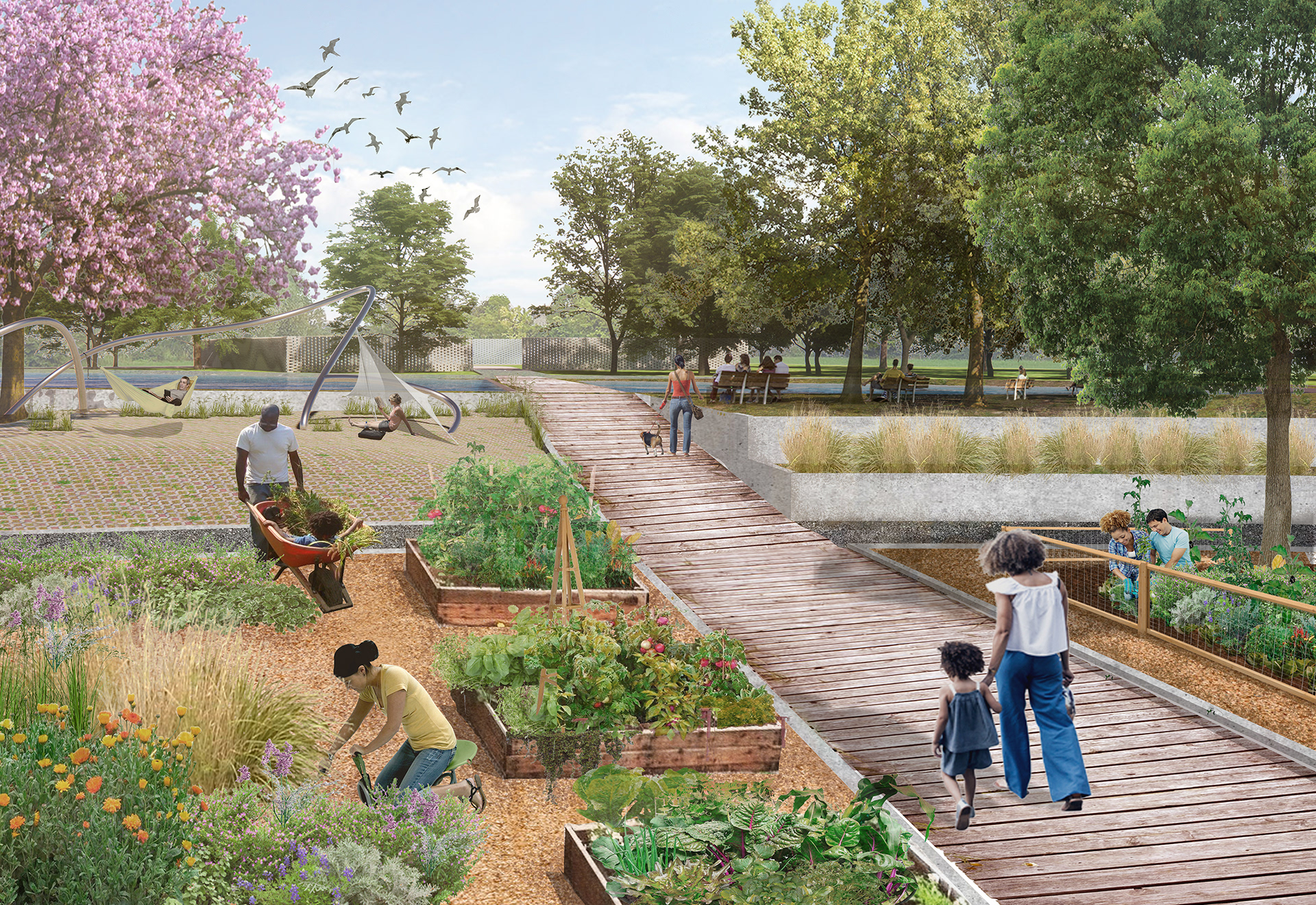
The extensive community garden facilitates food production and supplies the urban farmer’s market with locally grown produce. As a central space in the park, the garden features noninvasive and native plant species to be introduced around the site.

